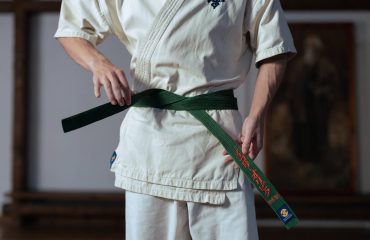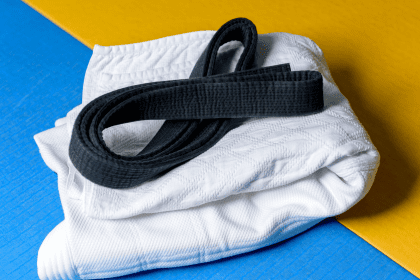
Achieving a black belt in judo is a significant milestone that many martial artists aspire to. This accomplishment symbolizes not only mastery of techniques and principles but also dedication, perseverance, and a deep understanding of this ancient martial art. The journey to a black belt in judo is unique for each individual and is influenced by various factors including training frequency, personal dedication, and the quality of instruction. In this article, we’ll explore the process of earning a judo black belt, examining the steps, challenges, and timeframes involved. Earning a black belt in judo requires a commitment to continuous improvement and a willingness to overcome obstacles. It is also important to recognize that achieving this rank is not the end but rather the beginning of a lifelong journey in martial arts. For those with experience in Brazilian jiu-jitsu, the transition may be smoother due to their familiarity with rigorous training and grappling techniques.
What is Judo?
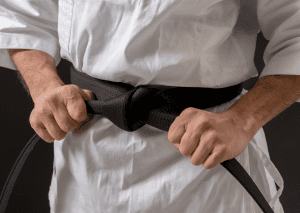
Judo, a Japanese martial art developed by Jigoro Kano in 1882, focuses on throws, joint locks, and pins. It is a popular martial art practiced worldwide, with a structured belt system that indicates a practitioner’s skill level. For many, the ultimate goal in judo is to earn a black belt, a symbol of high proficiency and commitment.
The Judo Belt System

The judo belt system begins with the white belt, signifying a beginner with no prior experience. As students progress through their training, they earn colored belts, each representing a higher level of skill and knowledge. The primary colored belts in judo include yellow belts, orange belts, green belts, blue belts, and brown belts. Achieving a black belt is a long-term goal that requires consistent training and dedication. Each colored belt represents a specific level of technical proficiency and understanding of judo principles. The judo belt system is structured to ensure that students build a solid foundation before advancing to the next belt.
Factors Influencing the Time to Get Black Belts
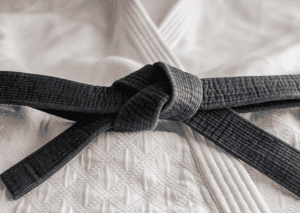
The question “How long does it take to get a black belt in judo?” does not have a simple answer. Several factors influence the time required, including the individual’s training frequency, natural aptitude, previous martial arts experience, and the quality of their dojo and instructors. Typically, it takes about four to five years of dedicated training to achieve a first-degree black belt, or shodan, in judo. This timeframe can vary significantly among different practitioners due to personal commitment and the specific training regimen followed. Some students might progress faster if they have prior experience in popular martial arts like karate or Brazilian Jiu-Jitsu. It is also essential to maintain a consistent training schedule to ensure steady progress.
Training Frequency and Intensity
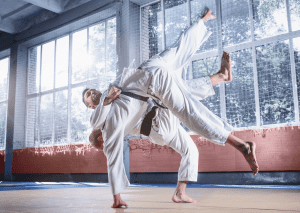
Consistent training is crucial in judo. Practicing two to three times a week may suffice for some, while others may train five or more times a week to advance more quickly. The intensity and focus during training sessions also play a significant role in a student’s progress. Many martial artists who aim to earn a black belt often engage in additional self-defense practice to enhance their skills. Training intensity can vary, but higher intensity often leads to faster improvement and readiness for belt tests. Regular participation in classes and sparring sessions helps in building muscle memory, which is vital for mastering judo techniques.
Quality of Instruction
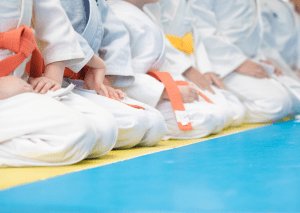
The quality of instruction at a dojo is equally important. Experienced instructors can provide valuable insights, and correct techniques, and help students develop their martial arts skills more effectively. A good instructor not only teaches techniques but also instills the principles and philosophy of judo. Teaching judo involves a deep understanding of both the practical and theoretical aspects of the martial art. Quality instruction is often the difference between slow and rapid progress in achieving higher ranks. Students benefit immensely from personalized feedback and guidance during their training sessions.
Prior Martial Arts Experience

Individuals with prior experience in other martial arts, such as Brazilian Jiu-Jitsu (BJJ), Muay Thai, or Tae Kwon Do, may progress faster in judo due to their existing martial arts skills and familiarity with training routines. However, each martial art has unique techniques and principles, so prior experience is just one factor among many. Familiarity with martial arts discipline and training can provide a significant advantage. However, adapting to judo-specific techniques like throws and pins is crucial. This previous experience can also foster a deeper understanding of the Japanese martial arts tradition.
The Role of Competitions

Participating in judo competitions can accelerate learning and progress. Competitions provide real-life applications of techniques and help students develop strategic thinking, resilience, and adaptability. Many dojos encourage participation in local, national, and international competitions. Competing helps students test their skills under pressure and learn from real-world experiences. It also provides an opportunity to observe and learn from other practitioners’ techniques. Regular competition participation is often a key component of the journey to earning a black belt in judo.
Learning Nage No Kata
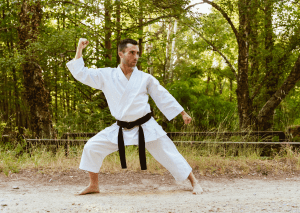
Nage No Kata, a set of prearranged throwing techniques, is a requirement for advancing to higher ranks in judo. Mastery of these forms demonstrates a student’s understanding of the principles and execution of throws. Regular practice of Nage No Kata is integral to earning a black belt. Practicing kata helps in developing precise movements and timing. It also reinforces the fundamental principles of balance and leverage in judo techniques. Mastery of kata is a clear indicator of a judoka’s technical proficiency and readiness for higher ranks.
Developing Muscle Memory

Judo techniques require precise movements and timing. Developing muscle memory through repetitive practice is essential. Muscle memory allows judokas to execute techniques instinctively during matches or self-defense situations. Repeated practice ensures that movements become second nature, which is crucial in the heat of competition. It also helps in minimizing errors during technique execution. Building muscle memory is a key aspect of transitioning from a white belt to a higher belt.
Importance of Technical Proficiency
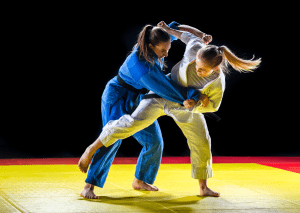
Technical proficiency is paramount in judo. Students must demonstrate accurate and effective execution of techniques, including throws, pins, and joint locks. Technical proficiency is assessed during belt tests and competitions. Mastery of techniques ensures safety and effectiveness in both practice and real-world scenarios. It also builds confidence and competence in the practitioner. High technical proficiency is a hallmark of those who achieve the first-degree black belt.
Earning Higher Ranks
Earning higher belt ranks in judo is a step-by-step process. After achieving the white belt, students progress to yellow, orange, green, blue, and brown belts before reaching the black belt. Each belt rank has specific requirements and timeframes. Progression through these ranks involves mastering increasingly complex techniques. Each new belt represents a significant achievement and recognition of a student’s skills and dedication. The journey through the colored belts lays the foundation for attaining the prestigious black belt rank.
The Time Period for Each Belt

The average time to progress from one belt to the next varies. On average, it may take six months to a year to advance from one colored belt to the next. However, this can vary widely based on individual progress and dojo requirements. The time required for each belt is influenced by the student’s dedication and training consistency. It is also dependent on meeting specific technical and kata requirements. Advancing through the ranks is a gradual process that requires patience and perseverance.
The Importance of Consistent Training
Consistent training over several years is crucial for earning a black belt in judo. Skipping training sessions or taking long breaks can significantly delay progress. Maintaining a regular training schedule helps build and retain skills. Consistency ensures steady improvement and readiness for belt examinations. It also fosters a disciplined approach to martial arts training. Regular practice is essential for mastering the techniques and principles necessary for higher ranks.
The Role of the Dojo Environment
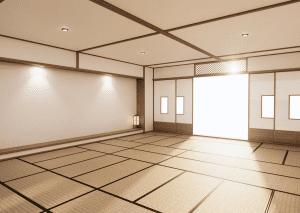
The dojo environment plays a significant role in a student’s progress. A supportive and challenging environment encourages students to push their limits and strive for excellence. Training with skilled partners also enhances learning. The dojo culture can significantly impact a student’s motivation and engagement. A positive environment fosters camaraderie and mutual support among practitioners. The quality of training facilities and resources also contributes to effective learning.
The Journey to the First-Degree Black Belt
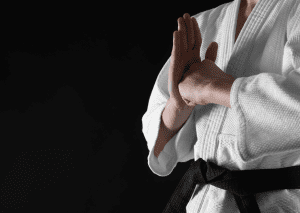
Earning a first-degree black belt, or shodan, is just the beginning. Judo black belts continue to train and refine their skills, working towards higher dan ranks. The journey to higher ranks involves more advanced techniques, a deeper understanding of judo principles, and contributions to the judo community through teaching and mentoring. Continuous learning and practice are essential for maintaining and improving skills. Higher ranks require a commitment to the judo lifestyle and philosophy. Advanced training often includes specialized techniques and a deeper study of judo history and theory.
The Commitment Required
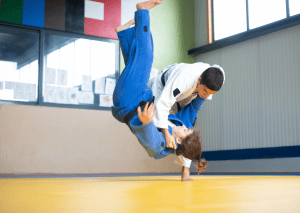
Achieving a black belt in judo requires a significant commitment of time, effort, and perseverance. It is a long-term goal that demands dedication, resilience, and a passion for the martial art. Students must be prepared to face challenges and setbacks along the way. The journey involves continuous self-improvement and adaptation. Commitment to training and personal growth is crucial for success. Support from instructors and peers can also play a vital role in maintaining motivation.
The Role of Self-Defense
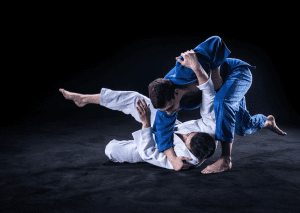
Self-defense is an integral part of judo training. The techniques learned in judo can be applied in real-life self-defense situations. Understanding and mastering these techniques enhances a student’s confidence and ability to protect themselves and others. Judo’s focus on leverage and technique makes it effective for self-defense. Practitioners learn to defend against larger opponents using skill and strategy. Self-defense training is a practical application of judo principles in everyday life.
Benefits Beyond the Belts
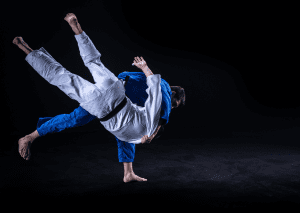
The benefits of training in judo extend beyond earning a black belt. Judo training improves physical fitness, mental discipline, and overall well-being. It also fosters a sense of community and camaraderie among practitioners. Training can enhance coordination, balance, and flexibility. It also promotes stress relief and mental clarity. The life skills gained from judo training are invaluable in various aspects of daily life.
Setting Realistic Expectations
It is important for students to set realistic expectations regarding the time and effort required to earn a black belt. Understanding that it is a long-term goal helps maintain motivation and focus throughout the training process. Patience and perseverance are key to success in judo. Setting short-term goals can help track progress and stay motivated. Recognizing that each individual’s journey is unique can also prevent frustration.
The Importance of Enjoying the Process
While the goal of earning a black belt is important, enjoying the process of learning and growing in judo is equally important. Embracing the challenges and celebrating small victories along the way makes the journey more rewarding. Finding joy in daily training can sustain long-term commitment. Building friendships and bonds with fellow practitioners enhances the experience. The love for judo should be the driving force behind training and progress.
Continuous Learning and Improvement

Even after achieving a black belt, continuous learning and improvement are essential. Judo is a dynamic martial art that evolves over time. Black belts must stay committed to refining their techniques and expanding their knowledge. Ongoing training helps in staying current with new developments and techniques. It also ensures that practitioners remain effective and skilled. Lifelong learning is a core principle of judo practice and philosophy.
Earning a black belt in judo is a significant achievement that requires years of dedicated training, perseverance, and a passion for martial arts. While the journey to a black belt varies for each individual, the average time is typically four to five years. Factors such as training frequency, quality of instruction, prior martial arts experience, and participation in competitions all play a role in the time required to reach this milestone.
For those interested in starting or continuing their judo training, NOCO Jiu Jitsu and Self Defense offers excellent programs and instruction to help you achieve your goals. Whether you are a beginner or an experienced martial artist, our dojo provides a supportive and challenging environment for all levels.
Ready to embark on your journey to earning a black belt in judo? Join us at NOCO Jiu Jitsu and Self Defense and take the first step towards mastering this incredible martial art. Start your training today and discover the many benefits that judo has to offer.
Frequently Asked Questions:
Q: What is the average time it takes to earn a black belt in judo?
A: Typically, it takes about four to five years of dedicated training to achieve a first-degree black belt, or shodan, in judo. However, this timeframe can vary significantly among individuals depending on factors such as training frequency, natural aptitude, and previous martial arts experience.
Q: How does prior martial arts experience influence the time it takes to earn a judo black belt?
A: Individuals with prior experience in other martial arts, such as Brazilian Jiu-Jitsu (BJJ), Muay Thai, or Tae Kwon Do, may progress faster in judo due to their existing martial arts skills and familiarity with training routines. However, each martial art has unique techniques and principles, so prior experience is just one factor among many.
Q: What role do competitions play in the journey to earning a judo black belt?
A: Participating in judo competitions can accelerate learning and progress. Competitions provide real-life applications of techniques and help students develop strategic thinking, resilience, and adaptability. Many dojos encourage participation in local, national, and international competitions as a key component of the journey to earning a black belt.
Q: How important is consistent training when working towards a judo black belt?
A: Consistent training over several years is crucial for earning a black belt in judo. Skipping training sessions or taking long breaks can significantly delay progress. Maintaining a regular training schedule helps build and retain skills, ensuring steady improvement and readiness for belt examinations.
Q: What benefits can one expect from training in judo beyond earning a black belt?
A: The benefits of training in judo extend beyond earning a black belt. Judo training improves physical fitness, mental discipline, and overall well-being. It also fosters a sense of community and camaraderie among practitioners. Additionally, the techniques learned in judo can be applied in real-life self-defense situations, enhancing a student’s confidence and ability to protect themselves and others.



